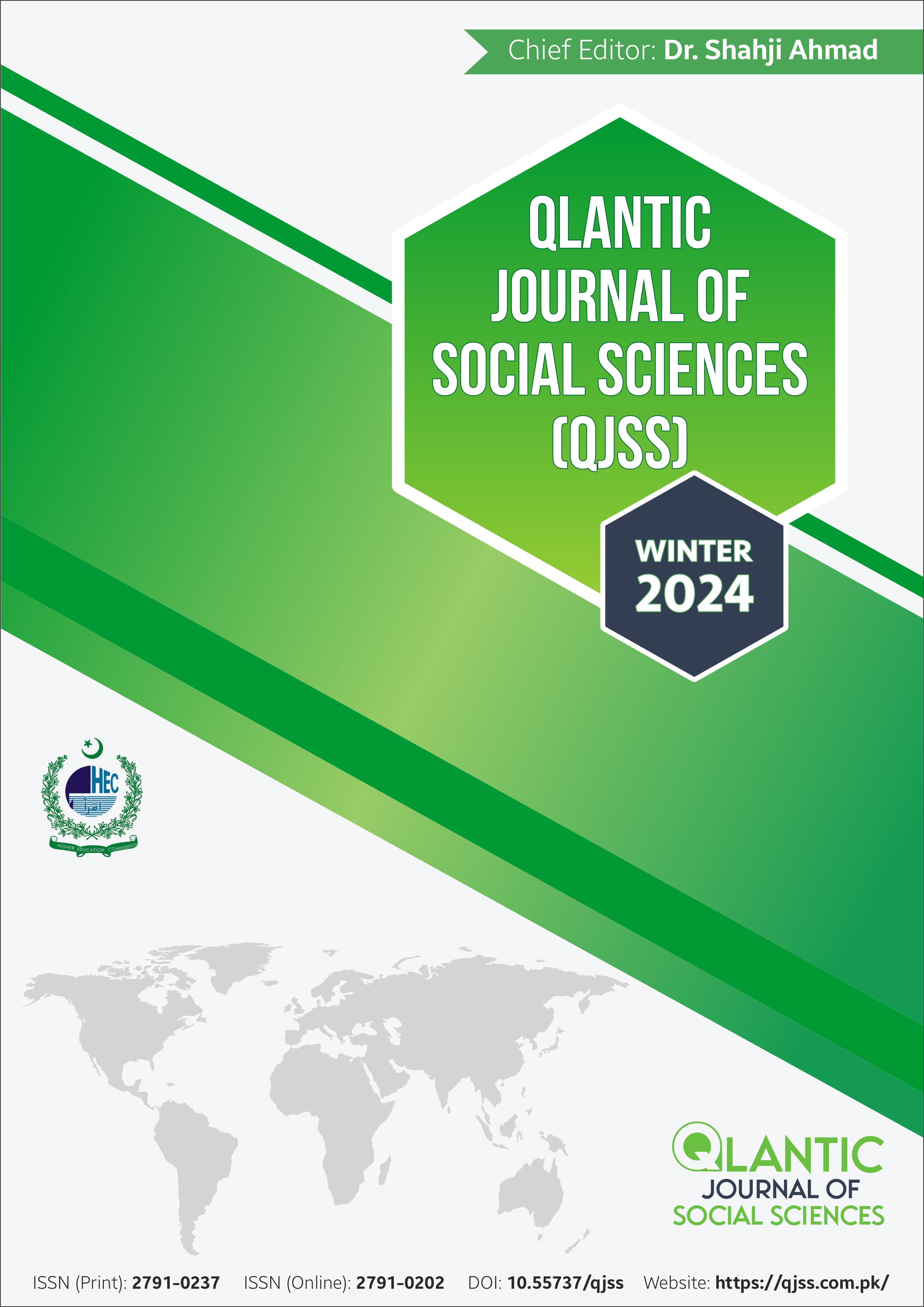Impact of Interpersonal Communication for Contraceptive Uses among Married Couples in Karachi
DOI:
https://doi.org/10.55737/qjss.129649283Abstract
The growing Pakistan population is putting pressure on the country’s limited resources, which indicates that population control and family planning are serious issues. The government of Pakistan has taken various steps to address this, but in the end, it will be up to the married couples whose interpersonal communication, laced with knowledge about planned child-rearing, will lead government programs to fruition. In order to determine whether and to what extent there was a correlation, this study examined the effectiveness of interpersonal communication between married couples and Planned Parenthood. The results of the study concluded that Planned Parenthood is made possible by effective communication between married couples. Despite the significant efforts of state family planning initiatives to disseminate knowledge, promote birth control methods, and encourage the best spacing between children, there is still a clear need for couples to be given appropriate power, especially when it comes to making the first parenting decisions.
References
Abidemi, S. O., Oluseyi, A. E., & Olayinka, S. O. (2023). Misconceptions and spousal communication about family planning among women of a rural community in Ekiti state, Nigeria. International Journal of Health Sciences, 6(2), 40-51. https://doi.org/10.47941/ijhs.1230
Azmat, S. K., Mustafa, G., Hameed, W., Ali , M., & Ahmed , A. (2012). Barriers and perceptions regarding different contraceptives and family planning practices amongst men and women of reproductive age in rural Pakistan: A qualitative study. Pakistan Journal of Public Health, 17-23.
Bandura, A. (1998). Health promotion from the perspective of social cognitive theory. Psychology & Health, 13(4), 623-649. https://doi.org/10.1080/08870449808407422
Bawah, A. A. (2002). Spousal communication and family planning behaviour in Navrongo: A longitudinal assessment. Studies in Family Planning, 33(2), 185-194. https://doi.org/10.1111/j.1728-4465.2002.00185.x
Berhane, A., Biadgilign, S., Amberbir, A., Morankar, S., Berhane, A., & Deribe, K. (2011). Men's knowledge and spousal communication about modern family planning methods in Ethiopia. African journal of reproductive health, 24-32.
Boulay, M., & Valente, T. W. (1999). The Relationship of Social Affiliation and Interpersonal Discussion to Family Planning Knowledge, Attitudes and Practice. International Family Planning Perspectives, https://doi.org/10.2307/2991959
Corey, J., Schwand, H., Boulware, A., Herrera, A., Hudler, E., Imbabazi, C., . . . Feinberg, S. (2022). Family planning demand generation in Rwanda: Government efforts at the national and community level impact interpersonal communication and family norms. PLoS ONE, https://doi.org/10.1371/journal.pone.0266520
D’Exelle, B., & Ringdal, C. (2022). Women’s use of family planning services: An experiment on the husband’s involvement. Journal of Development Economics, https://doi.org/10.1016/j.jdeveco.2022.102915
Drioui, C., & Bakass, F. (2021). Gender inequalities and fertility in Morocco: Measuring women’s empowerment and impact on the ideal number of children. Journal of Population and Social Studies, 29, 325-350. https://doi.org/10.25133/jpssv292021.021
Farooqui, M. N. (1994). Interpersonal communication in family planning in Pakistan. The Pakistan Development Review, 33(4II), 677-684. https://doi.org/10.30541/v33i4iipp.677-684
Hartmann, M., Gilles, K., Shattuck, D., Kerner, B., & Guest, G. (2012). Changes in couples' communication as a result of a male-involvement family planning intervention. Journal of Health Communication, 17(7), 802-819. https://doi.org/10.1080/10810730.2011.650825
Islam, S., Alam, M. S., & Hasan , M. (2013). Inter-Spousal Communication on Family Planning and Its Effect on Contraceptive Use and Method Choice in Bangladesh. Asian Social Science, 10(2). http://dx.doi.org/10.5539/ass.v10n2p189
Kamal, M. M., Islam, M. S., Alam, M. S., & Hasssn, A. B. (2013). Determinants of male involvement in family planning and reproductive health in Bangladesh. American Journal of Human Ecology, 2(2), 83-93. https://doi.org/10.11634/216796221302332
Kerckhoff, A. C., & Bean, F. D. (1970). Social status and interpersonal patterns among married couples. Social Forces, 49(2), 264-271. https://doi.org/10.1093/sf/49.2.264
Klomegah, R. (2006). Spousal communication, power, and contraceptive use in Burkina Faso, West Africa. Marriage & Family Review, 40(2-3), 89-105. https://doi.org/10.1300/j002v40n02_05
Link, C. F. (2011). Spousal communication and contraceptive use in rural Nepal: An event history analysis. Studies in Family Planning, 42(2), 83-92. https://doi.org/10.1111/j.1728-4465.2011.00268.x
Mosha, I., Ruben, R., & Kakoko, D. (2013). Family planning decisions, perceptions and gender dynamics among couples in Mwanza, Tanzania: A qualitative study. BMC Public Health, 13(1). https://doi.org/10.1186/1471-2458-13-523
Nishtar, N. A., Sami, N., Alim, S., Pradhan, N., & Hasnain, F. U. (2013). Determinants of contraceptives use amongst youth: An exploratory study with family planning service providers in Karachi Pakistan. Global Journal of Health Science, 5(3). https://doi.org/10.5539/gjhs.v5n3p1
Ogunjuyigbe, P. O. (2002). Spousal communication, changes in partner attitude and contraceptive use among the Yorubas of Southwest Nigeria. Journal of Social Sciences, 6(1), 59-64. https://doi.org/10.1080/09718923.2002.11892330
Palmore, J. A., Hirsch, P. M., & Bin Marzuki, A. (1971). Interpersonal communication and the diffusion of family planning in West Malaysia. Demography, 8(3), 411-425. https://doi.org/10.2307/2060629
Shah, N. M. (1974). The role of Interspousal communication in adoption of family planning methods: A couple approach. The Pakistan Development Review, 13(4), 452-469. https://doi.org/10.30541/v13i4pp.452-469
Tesfu, A., Beyene, F., Sendeku, F., Wudineh, K., & Azeze, G. (2022). Uptake of postpartum modern family planning and its associated factors among postpartum women in Ethiopia: A systematic review and meta-analysis. Heliyon, 8(1), e08712. https://doi.org/10.1016/j.heliyon.2021.e08712




